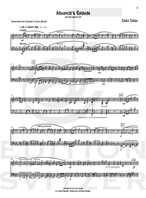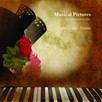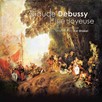
The Chick Corea Booklet
Composer: Chick Corea
Instrument: Marimba and Vibraphone
Level: unknown
Published: 2019
Price: €30.00
Item details
-
Description +
-
Spain
Spain is an instrumental jazz fusion composition by jazz pianist and composer Chick Corea. It is likely Corea's most recognized piece, and is considered a jazz standard.
Spain was composed in 1971 and appeared in its original (and most well-known) rendition on the album Light as a Feather, with performances by Corea (Rhodes electric piano), Airto Moreira (drums), Flora Purim (vocals and percussion), Stanley Clarke (bass), and Joe Farrell (flute). It has been recorded in several versions, by Corea himself as well as by other artists, including a flamenco version by Paco de Lucia, Al Di Meola and John McLaughlin in the 1980s, and a progressive bluegrass version by Bela Fleck in 1979. More recently, Corea has performed it as a duo with Japanese pianist Hiromi Uehara.
The Light as a Feather version of Spain received two Grammy nominations, for Best Instrumental Arrangement and for Best Instrumental Jazz Performance by a Group. In 2001, Corea was awarded the Best Instrumental Arrangement Grammy for "Spain for Sextet and Orchestra".
Children's Song #6
Corea, who cites Béla Bartók as a major influence, had, throughout his career, written brief miniatures he called “Children’s Songs.” In some ways, Corea’s lyrical but nevertheless rich in structure “Children’s Songs” were his versions of Bartók’s Mikrokosmos series.
Even more startling is the discovery that the propulsive “No. 6” was, in fact, a core segment of Where Have I Known You Before‘s epic closer, “Song of the Pharoah Kings.” Even the impish “No. 9” made its first appearance on The Leprechaun as “Pixieland Rag,” the stage-setter for another closing epic, “Leprechaun’s Dream,” which represented a new high water mark for Corea’s large ensemble writing at the time. Anyone who’s seen Corea in performance and heard him speak knows that he’s mischievous by nature; further evidence that the music we make is, by its very nature, a reflection of who we are.
Armando's Rhumba
Originally from the recording My Spanish Heart, "Armando's Rhumba" continues to be one of Chick's most popular charts. It's one of my favorites for sure.
Program Notes:
"This collection of three original Chick Corea solo piano com-positions was transcribed/arranged for vibraphone/marimba duo as an homage to the duo Double Image of David Friedman and David Samuels. So lyrical and distinctive, Chick’s music has always been close to my heart. I’ve had the pleasure of spending time in person with Chick and he is as pleasant and genuine a person as the artistry he displays. I originally premiered these duets with Angela Nelson as part of the Philadelphia Orchestra Chamber Music Series at the Kimmel Center in Philadelphia, PA. I hope you enjoy performing these duets as much as I have over the past few years."
Chris Deviney
-
-
Instrumentation +
-
Marimba and Vibraphone
-
-
About the composer +
-
Armando Anthony "Chick" Corea (born June 12, 1941) is an American jazz pianist/electric keyboardist and composer. His compositions "Spain", "500 Miles High", "La Fiesta" and "Windows", are considered jazz standards. As a member of Miles Davis's band in the late 1960s, he participated in the birth of jazz fusion. In the 1970s he formed the fusion band Return to Forever. With Herbie Hancock, McCoy Tyner, and Keith Jarrett, he has been described as one of the major jazz piano voices to emerge in the post-John Coltrane era.
-
-
Reviews +
-
Review (Percussive Notes, October 2021)By Chick Corea is a collection of three Chick Corea tunes arranged for marimba/vibraphone duo. Included in the collection is “Spain,” “Children’s Song #6,” and “Armando’s Rhumba.” Originally for solo piano, these pieces have been transcribed to pay homage to Double Image, a duo consisting of David Samuels and David Friedman.
The program notes include information on each of the pieces and background as to how this collection came to fruition. While a motor is not necessary, a standard vibraphone is expected, and two of the three pieces require a 5-octave marimba. Both players must be very comfortable with four-mallet technique, especially quick intervallic changes and inner-mallet melodic lines.There is a significant amount of rhythmic interplay in every piece, with figures such asquarter-note quintuplets or half-note triplets frequently pairing with syncopated eighth-note rhythms. This, coupled with a number of unison figures, makes the music very exciting. There are also some creative effects used throughout the collection, including foot stomping, dead strokes, and manual fan vibrato.While the individual parts are not too demanding, the pieces in the By Chick Coreacollection require a confident and cohesive duo. These excellent transcriptions would work well on any undergraduate/graduate recital or by a professional group in a variety of community settings.—Danielle Moreau
-
-
Credits +
-
Front Cover design: Gaia Gomes
Photo: Jessica Griffin
Engraving: Chris Deviney
Printed in Copenhagen, Denmark
www.editionsvitzer.com
-




